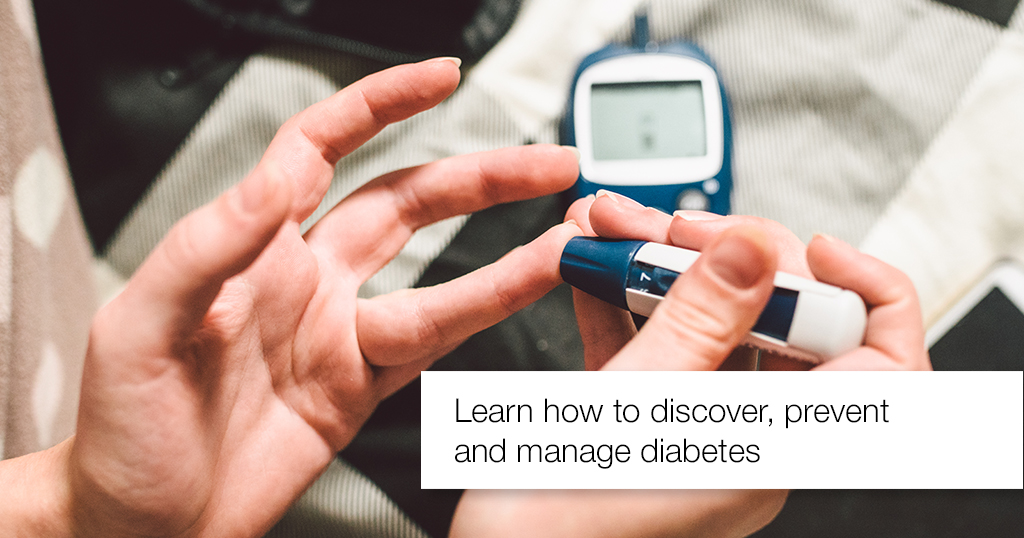

A blood test advised by your primary care doctor has just revealed that you have diabetes, and “What do I do?” is the first thought on your mind and the first words out of your mouth.
It’s the question many patients want answered after receiving a Diabetes diagnosis. We understand, it’s not easy for people to hear that they have diabetes. But, unfortunately, diabetes is a condition that affects thousands of Indians every year.
Diabetes has to be taken care of every day. And, when you are diagnosed with diabetes, your family got a diagnosis, too — they are now the parents, spouse and children of someone with a condition that requires strict management, so that complications are avoided. This means that their lives are also going to change. Your family members would want to help you manage your diabetes and be there for you as you create your care plan and start changing your daily routine.
Diabetes may be a part of your life, but it doesn’t have to be the defining part. Controlling the disease will take commitment, but if you and your family put in the right effort, you can live a full, happy life in which diabetes is nothing more than a footnote.
Here are some ways you and your loved ones (family) can work together to manage diabetes as a team:
According to the International Diabetic Federation (IDF), India; about 425 million people have diabetes in the world of which 82 million people are in the South East Asian Region. By 2045, this will rise to 151 million. In India, over 72.946.400 cases of diabetes were reported in 2017.
The sheer number of people being diagnosed with diabetes illustrates how urgently we need to come to grips with this disease.
First things first: treatment and management of diabetes depends on the type of diabetes you have. There are two common types of diabetes—Type 1 Diabetes and Type 2 Diabetes.
While in Type 1 diabetes (previously referred to as juvenile diabetes) the body ceases to produce or produces less insulin to regulate the level of blood glucose; in type 2 diabetes the body cannot use
insulin correctly leading to an oversupply of glucose in the blood. Type 2 diabetes accounts for the majority of diabetes cases.
People suffering from type 1 diabetes need insulin treatment on a daily basis to sustain life. In type 2 diabetes lifestyle changes help you manage the condition to a level where medication is unnecessary.
The most common types of diabetes—types 1 and 2—are not the only forms the disease can take. Rarer types exist, including those caused by:
Latent Autoimmune Diabetes in Adults (LADA), a particular type of diabetes also known as type 1.5 diabetes. Think of LADA as a hybrid of type 1 and type 2 diabetes.
Gestational Diabetes: In about 18 per cent of pregnancies, hormones interfere with insulin function in the mother’s body, causing elevated blood glucose levels—a condition known as gestational diabetes. This usually occurs in women during the second half of pregnancy. Blood glucose levels generally return to normal after delivery, but having gestational diabetes significantly raises a woman’s risk of developing type 2 diabetes later in life, and it may increase her children’s risk, too
Classic diabetes symptoms include frequent urination—especially having to get up and use the bathroom more often at night—and blurred vision. For women, frequent vaginal yeast infections can be an indicator. That’s why those who are obese, have a family history of the disease, or gave birth to large babies or had diabetes in pregnancy should be screened. At Apollo Hospitals, we often see patients who are already having diabetes related complications but did not know they had the disease because of an absence of symptoms.
Awareness, technology and education have come a long way. Doctors now have many interventions to use, from teaching patients to manage their diabetes at home to prescribing insulin pumps for people with type 1 diabetes or prescribing a variety of medications for those with type 2. Diabetic patients have more tools in their toolbox today, particularly medications.
Individuals with diabetes may experience long term complications. Most common complications include kidney disease (nephropathy), eye problems (retinopathy) and damage to the nerves (neuropathy) especially feet.
However, diabetes does not automatically result in complications, as many people assume. Uncontrolled diabetes leads to these complications. Proper management, especially keeping blood glucose within personal target ranges, prevents these long-term problems.
Just take time each day to do something you enjoy that gets your body moving. If you like taking walks, do that. If your mobility is limited—maybe you have hip or knee pain—focus on your upper body. Muscles store the majority of glucose, so any time you can work them, your body will be more efficient in using that energy source and keeping blood glucose levels down.
People with diabetes need to do four things on a daily basis:
Many people with diabetes think they have to follow a special diet—that’s not always the case. They just have to eat a healthy diet, just as people without diabetes should.
A diabetic’s quality of life is largely in his/her own hands. That doesn’t mean the patient has to face diabetes alone. In addition to one-on-one education sessions with diabetes specialists, maintaining a healthy lifestyle can help patients manage diabetes better. As diabetes is a team-supported disease, involvement of family and joining a diabetes support group or a diabetes management class can go a long way in dealing with diabetes diagnosis and managing it effectively.
The content is curated, verified and regularly reviewed by our panel of most experienced and skilled Diabetologists who take their time out focusing on maintaining highest quality and medical accurate content.
